The ‘Around the World’ series is my way of showing and sharing all the ways we are similar even in all the ways we’re different.
Rice tables, Rice buffets are some of my favourite things, ever. I am very much a ‘buffet’ person but the idea of this focus – a central dish around which multiple options exist – is thrilling to me for many reasons – colours, textures, new flavour combinations. Rice tables are amazing.
One of the first rice tables I experiences was the Indonesian Rijstafel in the Netherlands. I’ve experienced two others in Nigeria and at a Korean Restaurant (in New York), so here it goes:
Groundnut Chop | Nigeria
Origin: Also K’aurin gyada, Hausa [Northern Nigeria]. It’s easy to think of this originating in the north of nigeria where for many years, the groundnut pyramids lived. Based on groundnut sauce, this might have originated from ‘whatever is leftover comes to the table’. A mix of fruits, vegetables and other elements, it’s not hard to see this.
Central Dishes: Rice, Groundnut stew and lots of fruit and vegetable sides and sauces
Where it is served: At home
Peculiar feature: A mix of sweet, sour and spicy elements come together in an assembled dish. The rice, groundnut stew and toppings are laid on a platter from which everyone serves themselves. The condiments remain on the table for those who want additional toppings
A palm oil sauce version exists – Palm Oil Chop
Rijsttafel | The Netherlands
Origin: A colonial Dutch invention of festive Indonesian banquet
Central Dishes: Rijst/ Nasi (rice), sambals (condiments), sauces
Where it is served: Restaurants
Peculiar feature: I experienced my first Rijsttafel at a restaurant in The Hague. Rijstafel is a Dutch word that literally translates to ‘rice table’. It is is an elaborate meal adapted by the Dutch following the hidang presentation of nasi Padang from the Padang region of West Sumatra and may consist of many (forty is not an unusual number) side dishes served in small portions, accompanied by rice prepared in several different ways. Popular side dishes include egg rolls, sambals, satay, fish, fruit, vegetables, pickles, and nuts. In most areas where it is served, such as the Netherlands, and other areas of heavy Dutch influence (such as parts of the West Indies), it is known under its Dutch name.
But since Indonesian cuisine varies so wildly across the country’s 17,000 islands, high-ranking Dutch officials developed their own greatest-hits version of an Indonesian feast, their servants delivering dozens of miniature portions of regional foods, from the coconut beef sate of eastern Java (served with a spicy peanut sauce) to the spice-stuffed duck of Bali, all laid out around mountainous platters of rice. The Dutch called this marathon meal rijsttafel, or “rice table.”; Saveur
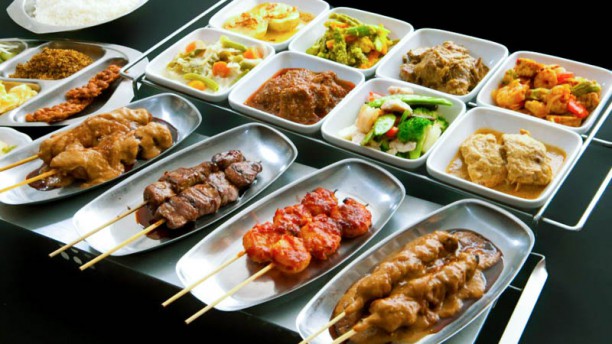
Nasi Padang | West Sumatra, Indonesia; Malaysia & Singapore
Origin: Indonesia
Central Dishes: Bareh (rice); Gulai (curry) and Lado (chili pepper)
Where it is served: Restaurants
Peculiar feature: All the food – rice, gulai and side dishes are set on the table for customers to pick and choose what they want and when. Because most Minangkabau people are Muslims, Minangkabau cuisine follows halal dietary law rigorously. Dishes are eaten by hand, with bowls of konokan – water with lime – given to wash hands before and after eating though cutlery is also permissible and can be requested.
One of the most delicious Padang foods is rendang, a dry beef curry cooked with coconut milk and spices for several hours until almost all the liquid has been evaporated. Every Padang restaurant is based around this dish, and families love to cook it at home, especially during the holidays. There’s a deep philosophical connection to the food. The beef is a symbol for the ninik mamak (tribal leader), coconut is connected to cadiak pandai (the intellectual), chilli relates to the alim ulama (spiritual leader) and condiments represent society as a whole. In the past, rendang was only for the aristocratic. Now everyone eats it; Source – Indonesia Expat
Nasi Kapau | Nagari Kapau, Bukittinggi, West Sumatra – Indonesia
Origin: Indonesia
Central Dishes: Steamed rice; Gulai [curries] with offal, poultry, seafood; and hot sauces/ sambals
Where it is served: Food stalls which have stages and rows of dishes
Peculiar feature: The method of service here sees the customer seated and then their order is taken. The waiter serves steamed fragrant rice with cubadak (unripe jackfruit gulai), and boiled cassava leaf, and sambal, using long serving spoons on the rice or in separate little plates
My local driver informed me afterwards that what sets Nasi Kapau apart from your common Nasi Padang (Padang mixed rice) is its use of flocculent rice. The side dishes are cooked with less the amount of oil than usual as well, which is a fact that only locals can detect from the get-go; Source – Good Indonesian Food
Nasi Campur | Indonesia, Malaysia, Singapore, Brunei, southern Thailand
Origin: Indonesia
Central Dishes: Nasi putih, white rice with meats, vegetables, peanuts, eggs and fried-shrimp krupuk.
Where it is served: Restaurants, Street food
Peculiar feature: read below
Traditionally, it will contain a selection of vegetable dishes, some curried or stewed meat, or fish and/or fried tempeh, a soy product similar to tofu. It just depends on what’s available.
From a street cart the rice might be wrapped up in a banana leaf, but in a warung it will usually be presented as rice in the centre of the plate, or banana leaf tray with sides scattered around it.
Warungs, especially in Bali will serve with a couple of sticks of sate ayam and krupuk, a type of Indonesian prawn cracker. Again, it depends on what’s available and how much the meal costs as to how elaborate the spread is. Malaysia has a similar dish called nasi kandar; Source – The Hungry Backpackers
Korean Table D’Hôte, Han-Jeongsik | Korea
Origin: Gujeolpan, from Korean royalty
Central Dishes: Bap (rice), Bachan – a selection sides and condiments, grilled meats – galbi, bulgogi, guk (soup), jjigae (stew) and kimchi
Where it is served: At home, in restaurants
Peculiar feature: The basic table setting for the meal is called bansang. Here the banchan are set in the centre of the table for sharing as well as the galbi or bulgogi, and a shared pot of jjigae – stew. The bowls of bap and guk (soup) are set in indivdual bowls. The Bachan increase with the formal ity of the meal!
Thali | Rajasthan, Gujarat, Southern India
Origin: India
Central Dishes: Typical dishes include rice, dal, vegetables, roti, papad, curd (yoghurt), small amounts of chutney or pickle, and a sweet dish to top it off
Where is it served: Restaurants
Peculiar feature: The idea behind a Thali is to offer all the 6 different flavors of sweet, salt, bitter, sour, astringent and spicy on one single plate (although the latter two flavors are actually forms of chemesthesis) as well as nutritionally balanced platter with grains, pulses, etc.
Sadhya | Kerala, South India
Origin: India
Central Dishes: Rice, curries, sambars
Where it is served: Special occasions, Onam festival
Peculiar feature: Sadhya is a mix of savoury and sweet dishes normally served on a banana leaf and mostly for lunch at festivals and on special occasions. Halfway through the meal, dessert is served!
Tradition insists that the tapering end of the leaf points to the left of the seated guest. Rice is served on the lower half of the leaf.
The feast begins with the serving of Parippu, a liquid curry made of small gram and ghee. The second course is Sambar, the famous South Indian vegetable stew in which any available combination of vegetables is boiled in a gravy of crushed lentils, onions, chillies, coriander and turmeric and with a pinch of asafoetida.
Avial, an unavoidable side dish is a blend of vegetables, coconut paste and green chillies. It is seasoned with a spoonful of fresh coconut oil and some raw curry leaves stirred in immediately after the dish is taken off the stove; Kerala Tourism
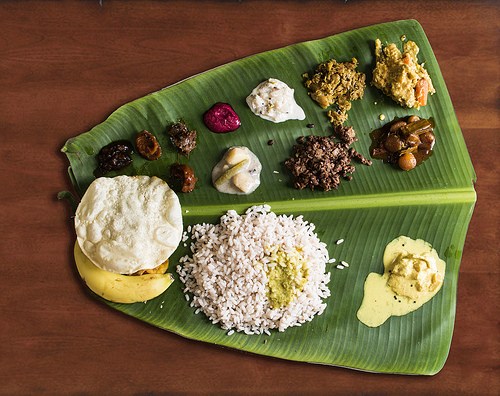
So there, all the rice tables I know. Share more if you can xxx

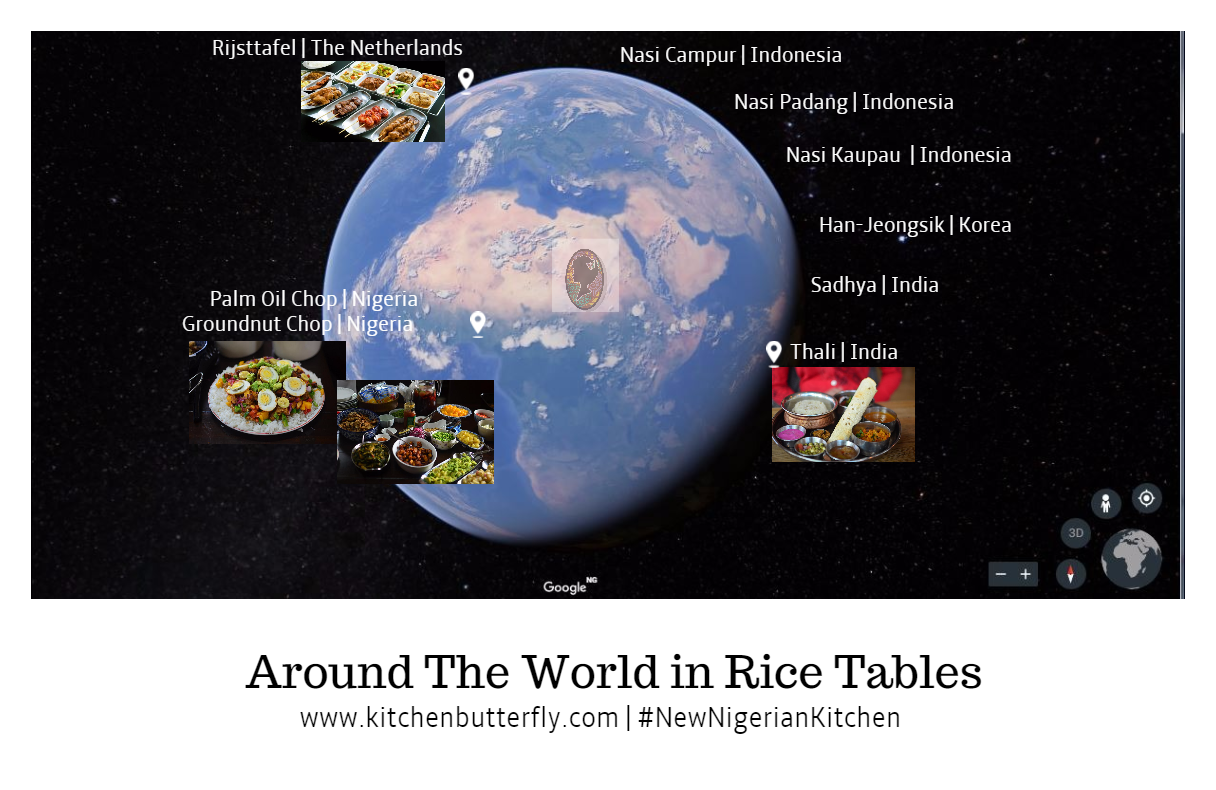
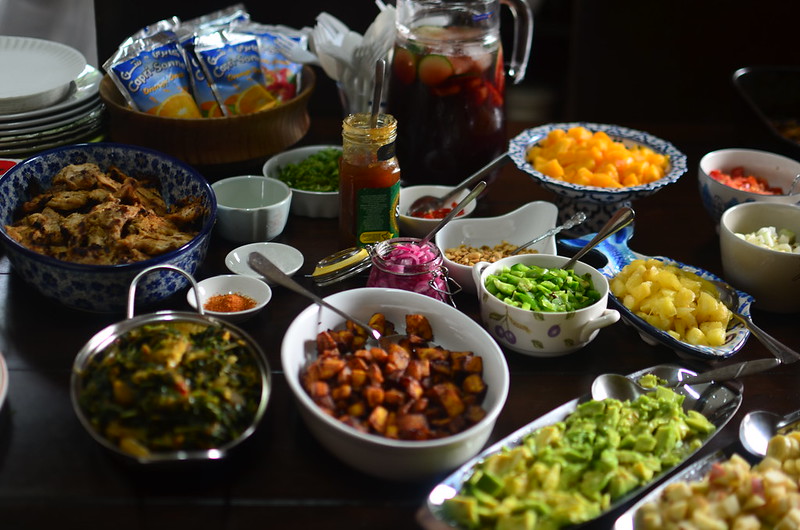
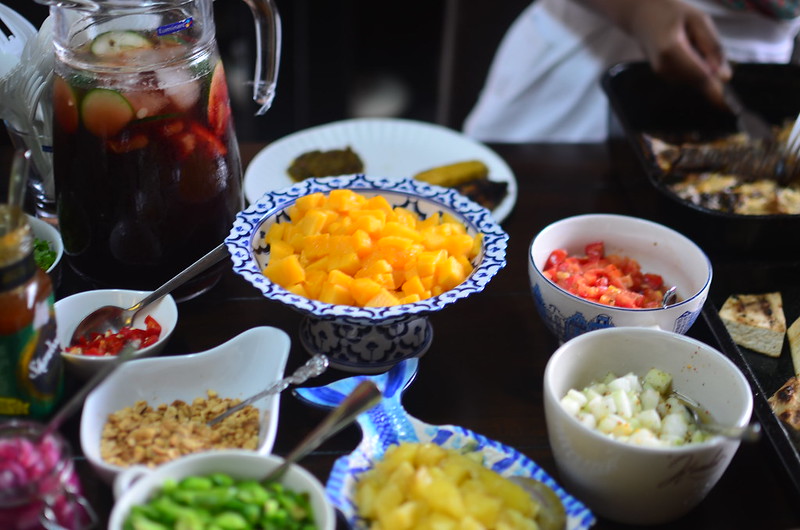
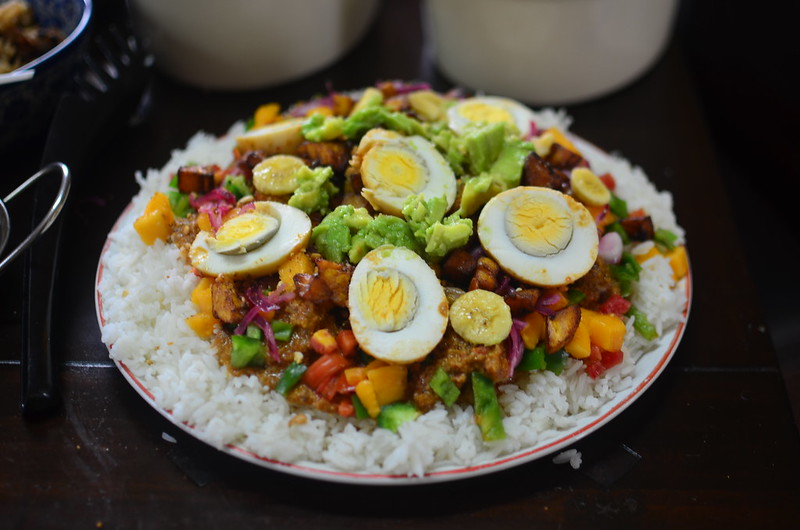
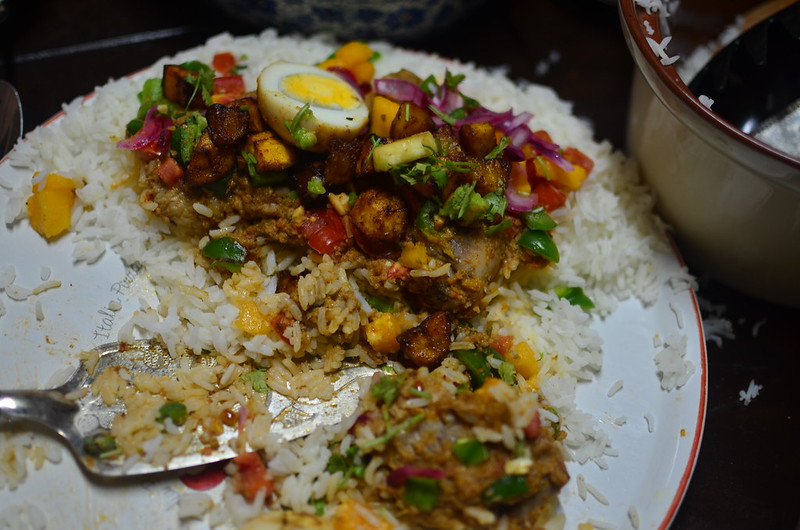
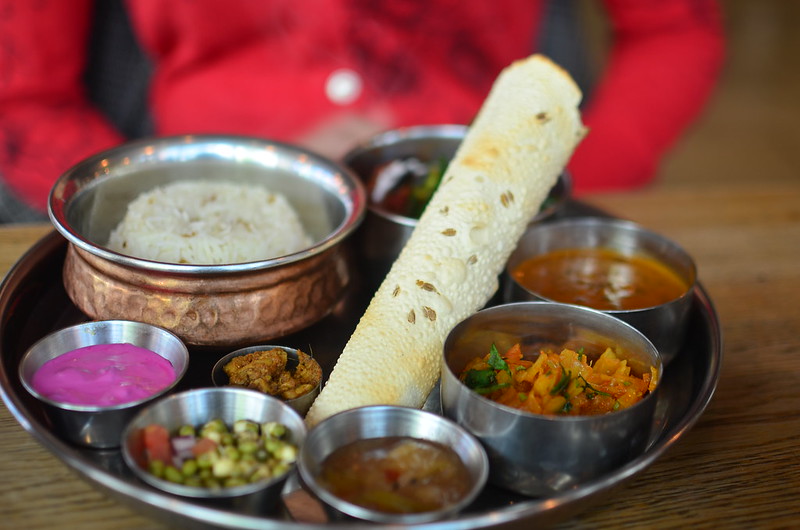
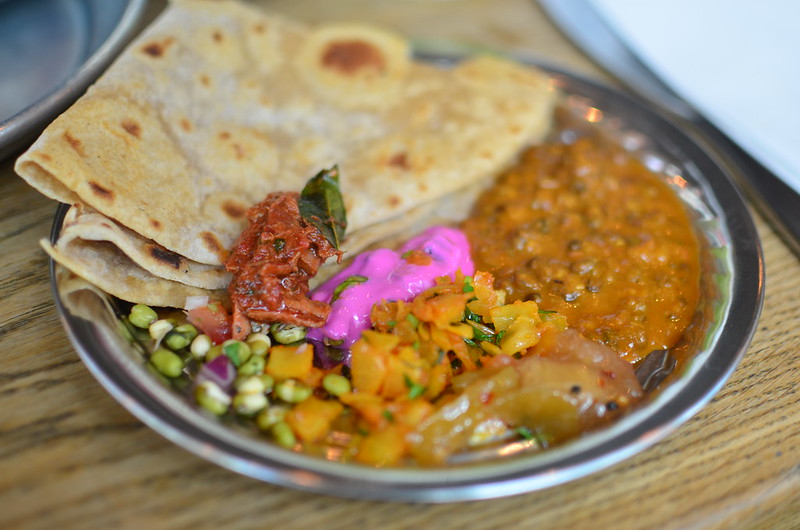
Leave a Reply